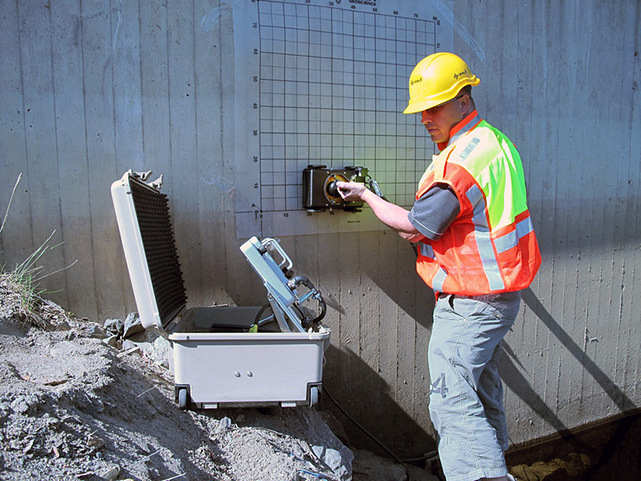Accuracy and Precision in Concrete Scanning Solutions
Wiki Article
Reveal the Transformative Power of Concrete Scanning in Making The Most Of Effectiveness and Safety
Concrete scanning has become an essential device in the building and construction market, using exceptional advantages in improving task efficiency and making certain safety requirements. By utilizing sophisticated modern technology, concrete scanning enables professionals to see past the surface area, revealing concealed intricacies that can influence the architectural stability of a building. The transformative power of concrete scanning depends on its capability to offer thorough insights and real-time information, changing how tasks are planned and executed. As we look into the intricacies of this cutting-edge method, a globe of possibilities opens, showcasing a new period of building and construction methods that prioritize accuracy and safety.Significance of Concrete Scanning
Ensuring the structural stability and security of building jobs begins with the essential step of carrying out thorough concrete scanning. Concrete scanning is a non-destructive technique made use of to detect and map subsurface aspects within concrete structures.Furthermore, concrete scanning assists in enhancing project timelines and budget plan by preventing unexpected costs and hold-ups that may occur due to unpredicted obstructions within the concrete. Inevitably, investing in detailed concrete scanning is a positive strategy that improves both effectiveness and safety in building and construction jobs.
Just How Concrete Scanning Functions
Concrete scanning operates as an important tool in construction projects by employing innovative innovations to detect and map subsurface components without triggering architectural damage. Ground Permeating Radar (GPR) and Electromagnetic Induction (EMI) are 2 key methods made use of in concrete scanning.Throughout the scanning process, the data accumulated is evaluated in real-time, allowing instant identification of potential threats or obstacles below the surface area. This details aids in decision-making, making certain that building and construction tasks continue securely and effectively. Furthermore, 3D imaging software can be used to develop topographic maps of the subsurface aspects, further improving project planning and implementation. By utilizing these innovative innovations, concrete scanning considerably lowers the danger of expensive problems and injuries on construction sites.
Benefits of Concrete Scanning
One of the key benefits of concrete scanning is the capacity to find and find embedded things such as rebar, post-tension cable televisions, and avenues accurately. Concrete scanning aids in planning and creating extra successfully, as it offers accurate details regarding the area and depth of architectural parts.
Study: Concrete Scanning Success

In one more instance, a building company utilized 3D concrete scanning to assess the problem old concrete structures in a historic building. The comprehensive scans supplied beneficial understandings into the degree of wear and tear and helped prioritize upkeep initiatives successfully. By proactively addressing areas of problem recognized via scanning, the company had the ability to prolong the life-span of the structure and make certain occupant safety and security.
These case researches highlight the transformative power of concrete scanning in boosting effectiveness, accuracy, and safety and security in building tasks.
Carrying Out Concrete Scanning in Projects
Carrying out innovative scanning technologies throughout construction tasks has actually ended up being increasingly important for enhancing precision and security. By integrating concrete scanning right into project additional hints planning and implementation, building groups can recognize possible dangers, such as rebar or post-tension cable televisions, hidden within concrete structures. This positive strategy minimizes the risk of accidents, delays, and expensive rework, eventually resulting in extra reliable task timelines and budget plans.To carry out concrete scanning effectively, project supervisors need to collaborate closely with knowledgeable scanning experts to figure out the most ideal scanning techniques for the specific job demands. Engaging scanning professionals from the beginning of a job makes it possible for the team to create comprehensive scanning strategies that address crucial areas of problem and make certain extensive information collection.
In addition, incorporating concrete scanning right into normal task workflows can enhance decision-making processes, as real-time check information supplies immediate insights right into the problem of concrete structures - Concrete Scanning. This data-driven method facilitates notified analytical and enables groups to make adjustments promptly, fostering a culture of efficiency and safety and security click site throughout the project lifecycle

Conclusion
Finally, concrete scanning plays an important role in article source boosting effectiveness and safety and security in building and construction projects. By using sophisticated modern technology to find and map out underlying frameworks within concrete, this process aids to prevent expensive errors, make certain architectural stability, and decrease risks on website. With the capacity to uncover surprise components and give accurate information, concrete scanning shows to be a valuable tool for maximizing job results and optimizing general success.Concrete scanning is a non-destructive technique made use of to identify and map subsurface elements within concrete frameworks. In addition, concrete scanning assists in enhancing job timelines and budget plan by staying clear of unforeseen costs and hold-ups that may occur due to unexpected blockages within the concrete. One noteworthy instance research includes a large-scale restoration job where concrete scanning played an important duty in guaranteeing project success.In an additional instance, a construction company made use of 3D concrete scanning to examine the problem of aging concrete structures in a historical building. By integrating concrete scanning right into project preparation and implementation, building teams can recognize prospective threats, such as rebar or post-tension cords, hidden within concrete structures.
Report this wiki page